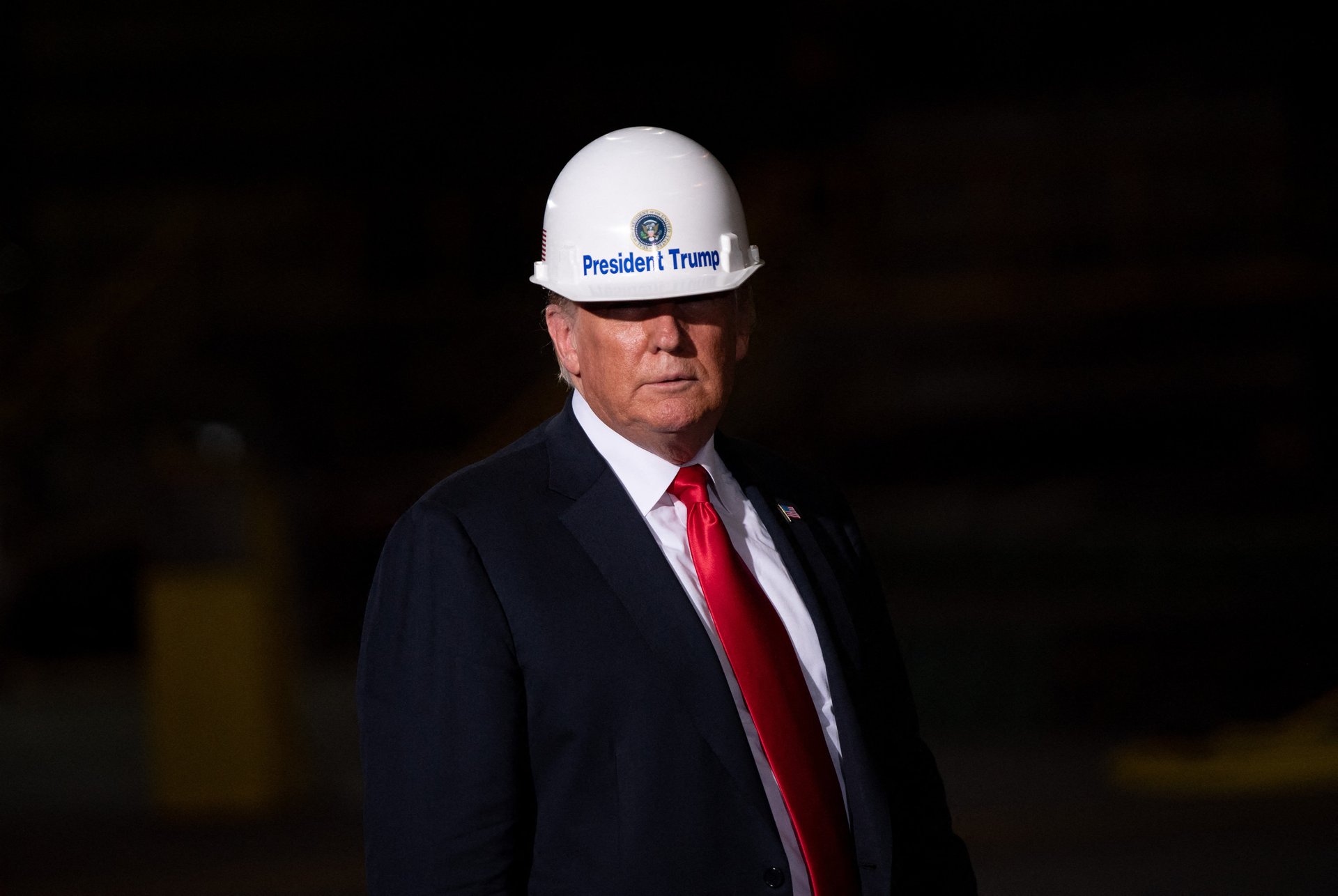Trump is giving the steel industry everything it wants
The industry wants fewer regulations, more tariffs, and an end to "unfair" trade rules. Trump plans to deliver

President Donald Trump is set to announce new tariffs of 25% on imported steel and aluminum, delivering a major win to the U.S. steel industry — all according to the industry’s plan.
Suggested Reading
Tariffs, which essentially function as a duty importers pay on goods, are often used to help protect fragile industries from strong foreign competition. The American steel industry has advocated for steel tariffs for decades, winning support from former Presidents Ronald Reagan, Jimmy Carter, and George W. Bush, to name a few.
Related Content
During his first term, and now in his second, Trump appears to be following the trend.
“Any steel coming into the United States is going to have a 25% tariff,” Trump told reporters on Sunday. “Aluminum too,” he added.
While most American businesses have cautioned that tariffs — like those set to hit Canada and Mexico next month and the 10% duties already in effect on Chinese imports — will hurt their profit margins, the steel industry supports them. The Steel Manufacturers Association asked Trump to announce new tariffs, slash regulations, and take on “unfair trade practices,” according to a five-step plan published by the trade group.
“The American steel industry faces serious threats from foreign countries that routinely violate trade laws,” the SMA said to Trump. “Your commitment to protect American jobs and support steelmakers will help us defeat that threat.”
In March 2018, during his first term, Trump ordered 25% tariffs on steel and 10% on aluminum from most countries, declaring that “steel is steel. You don’t have steel, you don’t have a country.” That June, he extended those duties to the European Union, Canada, and Mexico, although the Trump administration would later exclude several countries from different tariffs.
The tariffs helped create thousands of jobs in the U.S. steel industry — although those gains were later lost during the COVID-19 pandemic — while also causing steel prices to spike that year. That gave companies like Nucor (NUE), Steel Dynamics (STLD), U.S. Steel (X), and AK Steel (CLF) massive profit increases. Cleveland-Cliffs saw its net income more than triple in 2018.
“The tariffs have been a success, allowing our industry to restart idled mills, rehire laid-off workers, and invest in the future,” steel industry trade associations and unions wrote to then-President Joe Biden in 2021, as his administration debated maintaining his predecessor’s duties.
However, economists and companies that rely on steel told a different story.
Taxpayers were expected to pay more than $900,000 a year for every job saved or created by Trump’s steel tariffs, the Peterson Institute for International Economics estimated in 2019. The International Trade Commission in 2023 found that the tariffs boosted U.S. steel and aluminum prices by 2.4% and 1.6%, respectively. Steel imports fell 24% and aluminum imports dropped 31%.
Ford Motor Co. (F) and General Motors (GM) took roughly $1 billion hits, while Harley-Davidson (HOG) moved some production overseas to limit its damage. Caterpillar (CAT) raised prices to offset more than $100 million in costs tied to the tariffs that year.
“From Ford’s perspective, the metals tariffs took about $1 billion in profit from us,” the automaker’s then-CEO, James Hackett, said in September 2018. “If it goes on any longer, it will do more damage.”
The Biden administration replaced some steel and aluminum tariffs with tariff rate quota systems, which limited how much companies would be affected. Last May, Biden revised Trump’s tariffs on Chinese goods, raising duties on steel and aluminum products, electric vehicles, and other products.
With Trump’s new threats, it’s unclear what will happen to those tariff deals, which were reached with Japan, the E.U., and the United Kingdom. The SMA called on the president to terminate those agreements and reimpose 25% tariffs on Mexico, among other things.
Both the SMA and the American Iron and Steel Institute (AISI), which has its own blueprint outlining the industry’s priorities, also urge the president to expand existing tariffs on Chinese steel and tackle what they call burdensome regulations. Trump’s administration, led by Elon Musk’s group, is expected to eventually begin cuts at the Environmental Protection Agency and the Labor Department.
Also on Trump’s plate is the future of U.S. Steel. Trump has said that Japan’s Nippon Steel will invest in U.S. Steel, rather than fight for the highly-politicized acquisition blocked by his predecessor. Trump is set to meet with the head of Nippon this week, and it’s still unclear what exactly an investment would look like.
